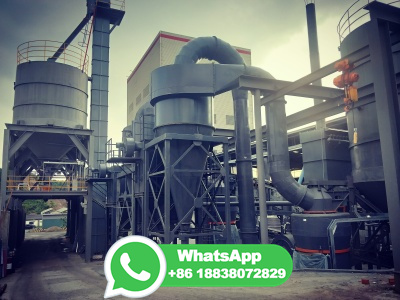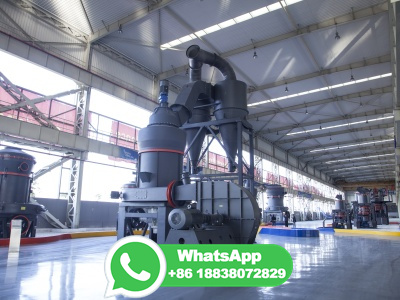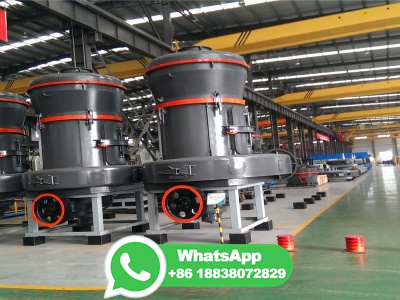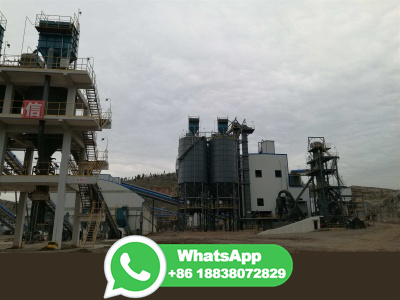
WEBJan 16, 2019 · A classic example of destructive distillation is the production of various products from coal. This process involves heating coal in a closed vessel, releasing volatile components that can be further distilled and separated into useful end products such as coke, coal gas, gas carbon, coal tar, ammonia liquor, and "coal oil.".
WhatsApp: +86 18203695377
WEBFeb 12, 2019 · Coal tar is a darkcolored liquid or semiliquid substance that is generated from bituminous coal through the process of significant distillation. ... Coal tar contains various chemicals such as aniline, benzene and phenols. It is viscous and used for appliions such as waterproofing and roofing. Its waterproofing property makes it a key ...
WhatsApp: +86 18203695377![COAL TAR OIL, [LIGHT DISTILLATE]](/au86m23/106.jpg)
WEBReactivity Profile. COAL TAR OIL contains phenols, which react as weak organic acids and are incompatible with strong reducing substances such as hydrides, nitrides, alkali metals, and sulfides. Flammable gas (H2) is often generated, and the heat of the reaction may ignite the gas. Phenols also generate heat with bases.
WhatsApp: +86 18203695377
WEBJun 26, 2021 · Coal tars are substances obtained from the heating of coal in the absence of oxygen, a process that occurs at integrated steel mills. Coal tar distillates result from the distillation of coal tars at coal tar refinery facilities.
WhatsApp: +86 18203695377
WEBDestructive distillation of a ton of coal can produce 700kg of coke, 100 liters of liquor ammonia, 50 liters of coal tar and 400 m 3 of coal gas. Destructive distillation is an increasingly promising method for recycling monomers derived from waste polymers. Destructive distillation of natural rubber resulted in the discovery of Isoprene which ...
WhatsApp: +86 18203695377
WEBJan 5, 2023 · Most of the chemicals derived from coal come from byproducts produced during the coking process. Coal is used to make coke to make steel. Coke gas (also called foul gas) contains coke tars, ammonia, and light oils. ... Coaltar pitch is the residue left from coal tar distillation. One of the products derived from coaltar pitch is activated ...
WhatsApp: +86 18203695377
WEBMay 1, 2019 · The whole process was preceded under the ambient pressure and temperature. This designed process would provide a referential approach for the environmentally friendly and high efficient separation of phenol and pyridine from coal tar. Download : Download highres image (337KB) Download : Download fullsize image; .
WhatsApp: +86 18203695377
WEBJun 5, 2024 · When coal is subjected to destructive distillation produces a wide range of commercially important products. The products can be coke, coal oil, ammonium hydroxide, coal tar, coal gas, etc. Coal is a complex substance when heated in a limited supply of air breaks down into simpler substances. The coal is heated {{1000}^{0}}C in the .
WhatsApp: +86 18203695377
WEBMar 1, 2022 · In a process of dry distillation, the organic material, endemic trees in this case, is exposed to a high temperature with a restricted amount of oxygen. ... and metals in coal gangue were hoped to act as alytic sites for insitu biomass alytic pyrolysis and secondary tar cracking. The influence of coal gangue char on pine pyrolysis ...
WhatsApp: +86 18203695377
WEBDistillation, also classical distillation, is the process of separating the component substances of a liquid mixture of two or more chemically discrete substances; the separation process is realized by way of the selective boiling of the mixture and the condensation of the vapors in a still.
WhatsApp: +86 18203695377
WEBDestructive distillation is the process of breaking down a compound into its component parts by heating it to a high temperature in the presence of a limited amount of air or oxygen. The compound is heated in a closed container, which causes the compound to break down into its component parts. The component parts are then released from the ...
WhatsApp: +86 18203695377
WEBJun 10, 2021 · The residue after distillation for the tested gasifiion tars, lower than for coal tar, should actually be considered even lower after taking into account the ash content, which is incomparably higher than for coal tar and is inert in the distillation process.
WhatsApp: +86 18203695377
WEBWhen processed, coal yields coke, coal tar and coal gas which in turn is used by many industries. What is destructive distillation? Figure 5 Destructive Distillation. It is a process in which coal is heated at very high temperature in the absence of air to obtain various useful products from it.
WhatsApp: +86 18203695377
WEBDec 1, 2023 · article{Hou2023SeparationCO, title={Separation characteristics of lowtemperature coal tar containing solid particles by vacuum distillation: Effects of distillation pressure and solid particle content}, author={Yujie Hou and Chang'an Wang and Fu Yang and Lin Zhao and Xinyue Gao and Li Ma and Xiaole Huang and Zhonghui .
WhatsApp: +86 18203695377
WEB4 days ago · Coal gas is a gaseous mixture, mainly composed of methane, hydrogen, and carbon monoxide that are formed by the destructive distillation (it means heating in the absence of air) of bituminous coal and is also used as a fuel. At times, coal steam is added to react with the hot coke, therefore increasing the yield of gas.
WhatsApp: +86 18203695377
WEBSolution. The nature of the products of the destructive distillation of bituminous coal, in absence of air, depends largely upon the temperature at which the process is carried out. When such coal is heated to 450°500° C. it yields gas and oily vapours consisting chiefly of paraffin hydrocarbons.
WhatsApp: +86 18203695377
WEBIndole is naturally present in various sources, including the highboiling fraction of coal tar, jasmine oil, diverse floral species, pitch, and even in fecal matter, typically in concentrations of up to %. ... This process involves a cascade of intracellular enzymes collectively known as "tryptophanase." The test is commonly employed as ...
WhatsApp: +86 18203695377
WEBResidual asphalt is obtained artificially by the distillation of crude petroleum oil with asphaltic base. ... Coal tar is the byproduct obtained during the production of coal gas. It is used for preserving timber, laying macadam roads etc. The process consists of coal heated in closed iron vessels and the evaporated gases are collected in ...
WhatsApp: +86 18203695377
WEBJan 1, 1993 · This chapter discusses coal carbonization. Coal carbonization involves the destructive distillation of coal, and during this process, as much as 50% of the weight of the coal feedstock is driven off as gaseous and volatile components. These are regarded as byproducts of the coking process, and include combustible gases (for example, .
WhatsApp: +86 18203695377
WEBNov 1, 1998 · The coal tar pitches studied, denoted as B1, B2, B3 and B4, were obtained at different stages in the distillation of the same tar. ... can be thought that the distilled molecules at each heating step are those having a lower H ar /H al ratio or perhaps the distillation is not the main process involved in the raising of the softening point of a ...
WhatsApp: +86 18203695377
WEBFor a more detailed description of the coaltar distillation process, including coaltar pitch, the reader is referred to IARC Monograph Volume 92, and to the Monograph on Occupational Exposures during Coaltar Distillation in this volume. Human exposure. Occupational exposure
WhatsApp: +86 18203695377
WEBcoal tar, principal liquid product resulting from the carbonization of coal,, the heating of coal in the absence of air, at temperatures ranging from about 900 to 1,200 °C (1,650 to 2,200 °F).Many commercially important compounds are derived from coal tar.. Lowtemperature tars result when coal, peat, lignite, or wood are carbonized at temperatures .
WhatsApp: +86 18203695377
WEBThe chemical process takes place on unprocessed materials. When organic substances are decomposed by heat in the absence of air is known as destructive distillation. Products obtained from the destructive distillation of coal are coal gas and coal tar. Coal is one of the most commonly used natural hydrocarbon substances. It is obtained by mining.
WhatsApp: +86 18203695377
WEBOct 13, 2022 · The separation of coal tar into fractions by distillation is studied on periodic laboratory apparatus using columns of different type, with different heating rates of the tar, distillation temperatures, and treatment times. The composition of the light, phenolic, naphthalene, absorbing, and anthracene fractions is determined by chromatography. .
WhatsApp: +86 18203695377
WEBAug 2, 2020 · COAL TAR; Coal tar is derived from the is a black viscous liquid used as a sealing agent in old roads making all over the world. It is not used in the current era, due to the carcinogenic product. It is produced through the process of destructive distillation in the absence of air. Coal Tar not provide enough grip to the tyres of the ...
WhatsApp: +86 18203695377
WEBFractional distillation is a process by which a mixture can be separated based on the differences in boiling points of its components. It is routinely performed on oil to yield different fuels.
WhatsApp: +86 18203695377
WEBJun 30, 2005 · Within a few years quinoline was becoming cheaply available from coal tar distillation. It was a short step to see if quinoline was an analgesic/antipyretic. ... Until relatively recently drug discovery was very much a 'hit and miss' process. Enormous numbers of organic chemicals were synthesised and tested against a whole raft of .
WhatsApp: +86 18203695377
WEBJan 20, 2018 · Coaltar pitch (CTP) is a solid residue derived from coal tar distillation process, and its yield is generally in the range of 50–60 wt% of coal tar. Coal tar yield usually accounts for ∼3–5 wt% of coal (dry basis) for producing coke. coke yield is usually in the range of ∼75–80 wt% of dry basis coal (Granda et al., 2014). Therefore ...
WhatsApp: +86 18203695377
WEBDestructive distillation of coal is the process of heating coal in the absence of air. Byproducts formed in this process are coke, coal tar, ammonia, and coal gas. For more information on Destructive Distillation of Coal, watch the below video. Coal Tar.
WhatsApp: +86 18203695377
WEBAug 26, 2020 · The samples of dry distillation pine tar and coal tar were investigated by TGDTGDSC, and the combustion characteristics and combustion kinetics of the samples were studied. The results show that there exist two significant mass loss peak and endothermic peak in the combustion of dry distillation coal tar and pine tar, which, .
WhatsApp: +86 18203695377